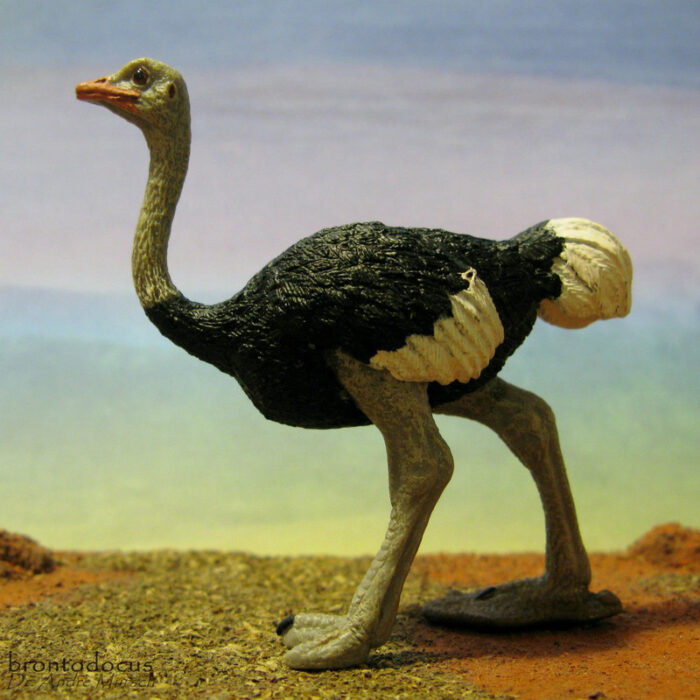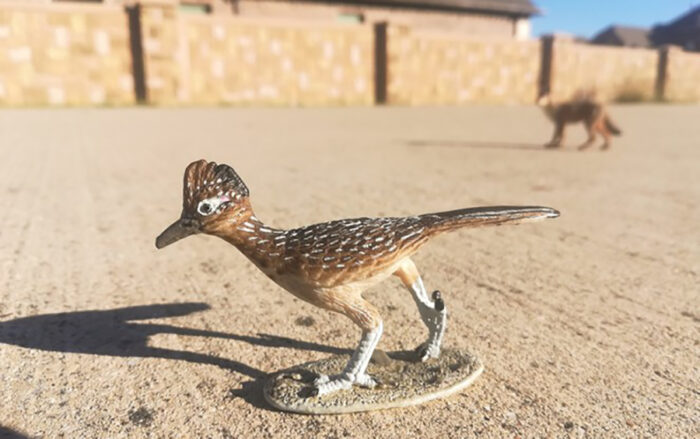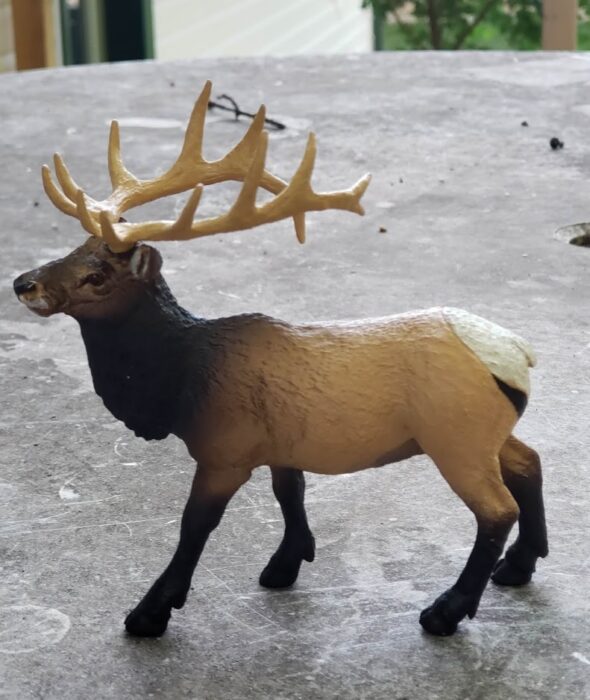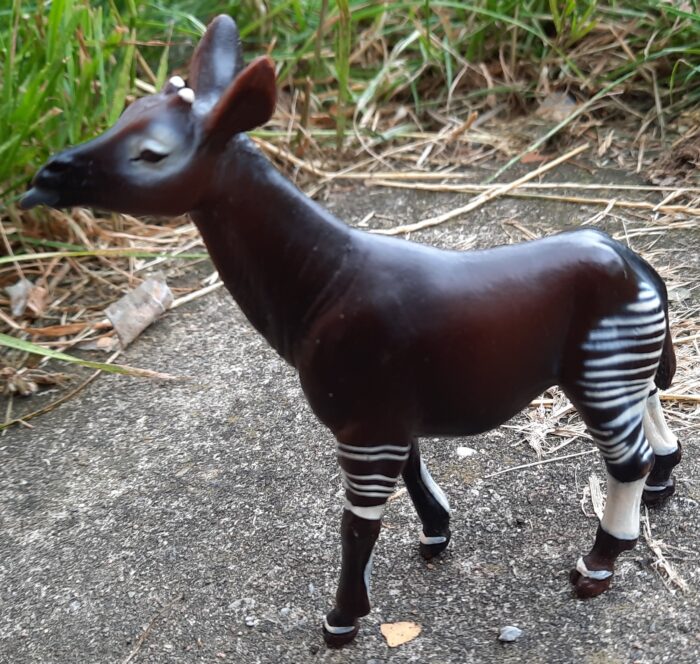Walk-around of the Safari Ltd. Wild Safari Wildlife (but also listed in the Safari Farm line) ostrich, Struthio camelus Linnaeus, 1758, originally released in 2010. Height is 88 mm but the figure is not standing fully upright and would be over 100 mm if it did. So the scale would be between approx.
Brand: Wild Safari Wildlife
Hippopotamus, 1996 (Wild Safari Wildlife by Safari Ltd.)
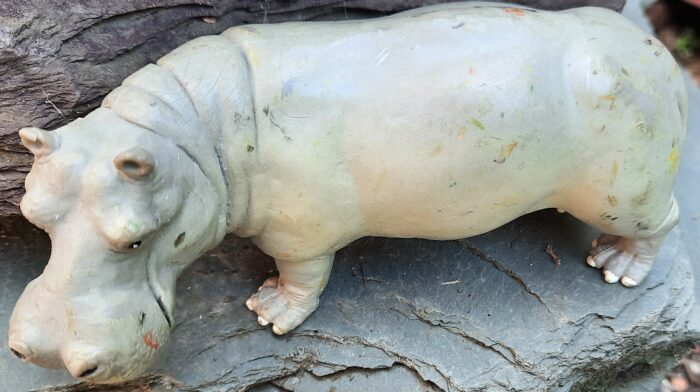
Another “Savanah Summer” that will see us back into the water, or at least wade through it. After all, though they are known as “water horses”, the Hippopotamus (Hippopotamus amphibius) does not actually swim like it’s cetacean relatives, more hopping along the bottom of the body of water they are in, so don’t venture into deep water.
Black Rhinoceros (Wild Safari Wildlife by Safari Ltd.)
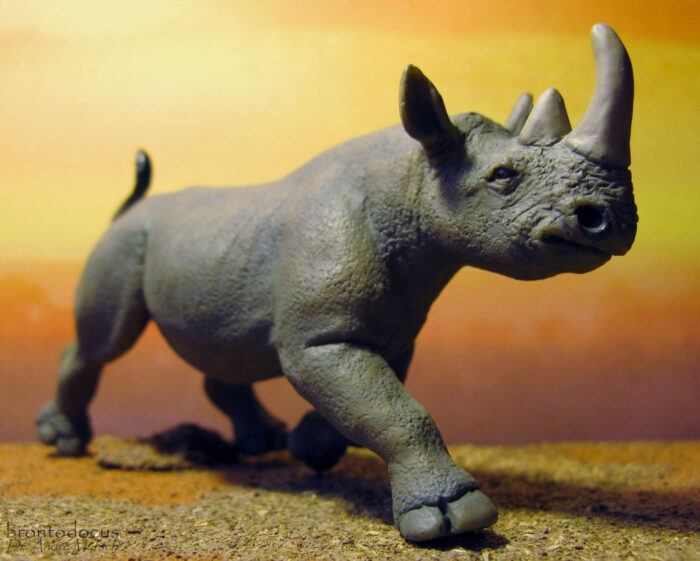
The trotting Safari Ltd. Wild Safari Wildlife 228929 black or hook-lipped rhinoceros, Diceros bicornis (Linnaeus, 1758). Snout-vent length is approx. 121 mm and shoulder height 65 mm, so the scale is between approx. 1:21 and 1:27. The human figure (man from Safari Ltd People in Motion TOOB) is approx.
Giraffe, baby (Wild Safari Wildlife by Safari Ltd.)
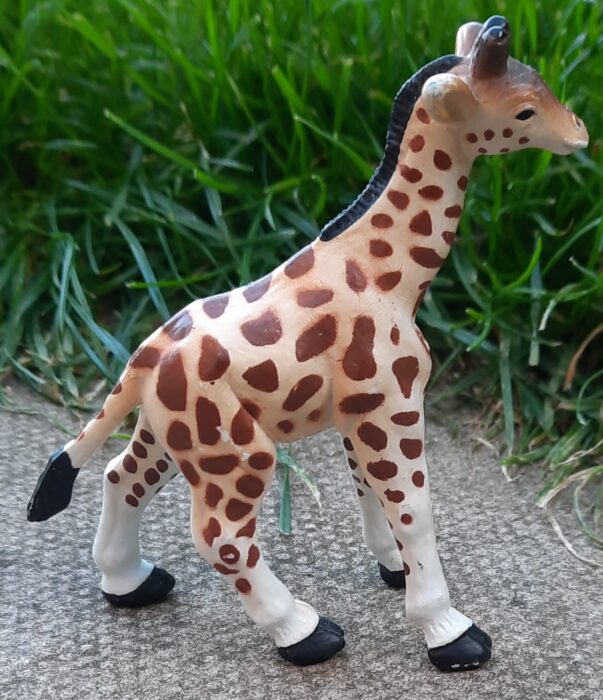
Picking subjects for the “Savanah Summer” can often be a tall order. I can often be sticking my neck out trying to pick the best of Africa’s finest. This time though, it’s been easy to choose: I am finally covering the Giraffe (Girrafa camelopardalis). The tallest animals on the planet, these graceful creatures can grow to 18.7 ft tall and are found across Africa.
Sumatran Rhinoceros (Wild Safari Wildlife by Safari Ltd.)

Review and images by EpicRaptorMan; edited by bmathison1972
When you think of the word “rhinoceros” the Sumatran rhinoceros (Dicerorhinus sumatrensis) is likely not the first species to come to mind. Unfortunately, that is likely because it is a rare and dwindling species with an estimated scattered population of 80 or less putting them on the “Critically Endangered” list by the IUCN.
Greater Roadrunner (Wild Safari North American Wildlife by Safari Ltd.)
Collared Peccary (Wild Safari North American Wildlife by Safari Ltd.)
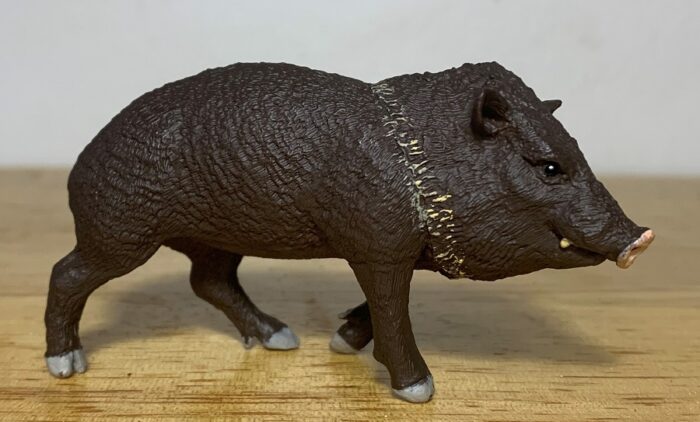
Although they look very much like pigs, and are sometimes called New World pigs, peccaries aka javelinas belong to their own distinct family, Tayassuidae. Pigs belong to the family Suidae and about 30 million years of evolution separates the two families that together make up the Suina clade. While all true pig species hail from the Old World, all extant peccary species come from the Americas, although the family originally evolved in Europe.
White Rhinoceros, 1996 (Wild Safari Wildlife by Safari Ltd.)
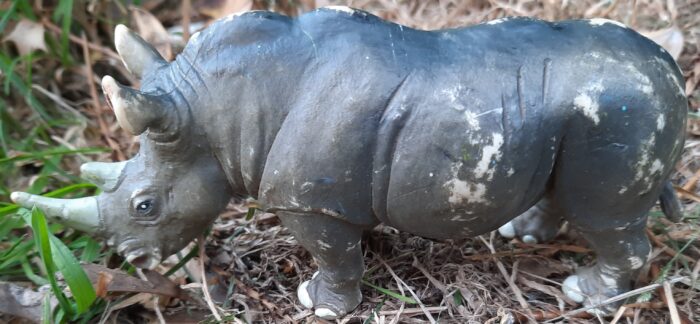
Another ride out on the “Savanah Summer” and we cover a figure of the last of the Big Five African mammals for me to review, the Rhino. In this case, it is the largest of the rhinos, the White Rhino (Ceratotherium simum). There are two subspecies, the more common southern and the near extinct northern, now with only two individuals remain.
Elk, 2013 bull (Wild Safari North American Wildlife by Safari Ltd.)
Okapi, 1999 (Wild Safari Wildlife by Safari Ltd.)
Snub-Nosed Monkey (Wild Safari Wildlife by Safari Ltd.)

Snub-nosed monkeys are comprised of 5 species that make up the Rhinopithecus genus in the Colobinae subfamily. They live in southern China as well as parts of Myanmar and Vietnam. Snub-nosed monkeys get their name from their flattened noses which are thought to be an adaptation to their cold, high elevation environment.
Maned Wolf (Wild Safari Wildlife by Safari Ltd.)
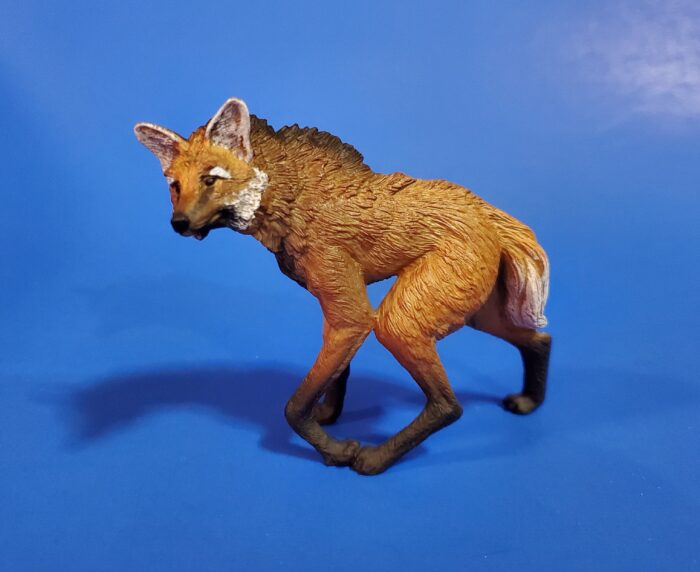
Review and images by Saarlooswolfhound; edited by bmathison1972
The Safari Ltd. maned wolf, listed as #100367, was released in 2021 and is currently in production. This model is included as part of the Wild Safari Wildlife Collection. The model itself measures to around 4 inches long and 3.5 inches tall (10.16 cm x 8.89 cm).

